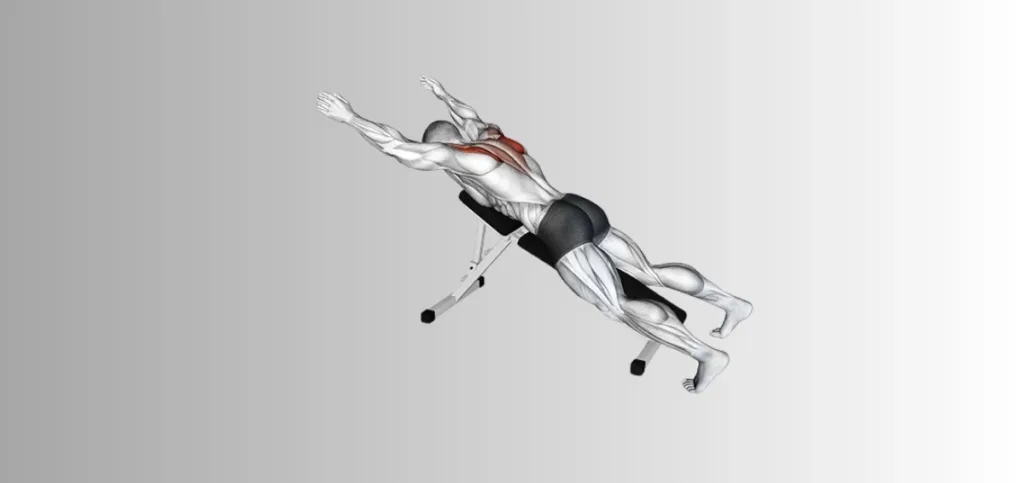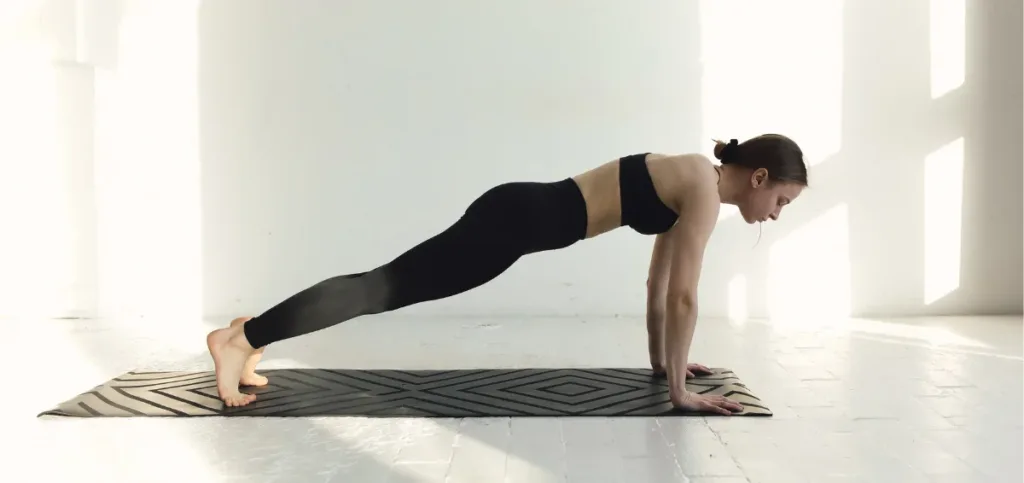
Shoulder impingement can be painful and frustrating. In reality, it restricts your range of motion and gets your upper body weaker, which further causes problems in your daily activities. The silver lining is that with suitable rehab-oriented movements, you can relieve the discomfort and recover your strength. These shoulder impingement exercises are designed to reduce pain and improve posture. Also, they promote mobility without stressing your joints. All you need is consistency, patience, and controlled movement.
Below, you will find eight effective exercises along with how to do them right. If you are dealing with pain, these exercises can support recovery safely.
Proper Exercises for Shoulder Impingement
1. Scapular Retraction
Difficulty Level: Beginner
This exercise strengthens the muscles around your shoulder blades and upper back. It improves posture and helps reposition the shoulder joint, reducing impingement. It is not harsh and doesn’t need any weights, making it perfect for beginners. With time, scapular control allows your shoulders to move freely without pinching.
How to Perform It:
- Stand or sit up straight.
- Pull your shoulder blades and squeeze them lightly.
- Hold the contraction between 5 and 10 seconds.
- Release everything slowly.
- Do 2-3 sets of 10-15 reps.
2. Doorway Stretch
Difficulty Level: Beginner
This static stretch targets the chest and front shoulder muscles. They become tight due to poor posture or overuse. Loosening them creates more space in your shoulder joint. This further reduces the overall pressure and pinching. In fact, it is a solid warm-up or cooldown addition.
How to Perform It:
- Stand in a doorway with your elbows bent at 90 degrees.
- Place your forearms on the doorframe.
- Step one foot forward and lean into the stretch in a gentle way.
- You should feel a stretch across your chest and shoulders.
- Hold for 20–30 seconds and repeat all these things 2–3 times.
3. Wall Angels
Difficulty Level: Intermediate
Wall angels improve shoulder mobility and alignment. They teach your body to move the shoulder blades and upper arms in sync. It’s an excellent postural exercise that creates stability and relieves impingement by reducing internal rotation.
How to Perform It:
- Stand with your back flat against a wall.
- Keep your lower back, shoulders, and head touching the wall.
- Raise your arms to shoulder height with elbows bent.
- You have to move your arms up and down in a slow manner, like you are making snow angels.
- Perform 2 sets of 10 reps, keeping your arms as close to the wall as possible.
Read Also: Dumbbell Shoulder Exercises
4. Prone Y Raises

Difficulty Level: Intermediate
This move strengthens the lower trapezius and stabilizing muscles around your shoulder blades. These muscles help support overhead movement, which is a common trigger point for impingement. Also, it trains scapular positioning to reduce strain on your rotator cuff..
How to Perform It:
- Lie face down on a bench or mat.
- Extend your arms in a Y position, thumbs up.
- Lift your arms off the ground slowly while keeping your forehead down.
- Pause at the top, then lower the arms with control.
- Do 2–3 sets of 12 repetitions.
5. Internal Rotation With Resistance Band

Difficulty Level: Beginner
This movement targets the subscapularis. It is an internal rotator of your shoulder. Strengthening this small but critical muscle helps balance out external rotation and supports proper joint movement.
How to Perform It:
- Attach a resistance band to a doorknob or stable object.
- Stand sideways with the band in the hand closest to it.
- Bend your elbow to 90 degrees and keep it near your torso region.
- Now, you have to pull the band across your body.
- Now, return to the start position in a slow manner.
- Perform 2 sets of 15 reps on each side.
6. External Rotation With Resistance Band
Difficulty Level: Beginner
This exercise strengthens the infraspinatus and teres minor. These are the two rotator cuff muscles that are important for shoulder health. These muscles get weakened with impingement most of the time. Improving their strength can restore joint function.
How to Perform It:
- Attach a resistance band to a stable anchor.
- Hold the band with the arm farthest from the anchor.
- Keep your elbow bent at 90 degrees and tucked into your body.
- Rotate your arm outward against the resistance of the band.
- Now, return in a slow manner.
- Do 2–3 sets of 12–15 reps per arm.
7. Sleeper Stretch
Difficulty Level: Intermediate
The stretch targets the posterior capsule and internal rotators of the shoulder specifically. Tightness in this area leads to impingement symptoms. This stretch is excellent for athletes and those with mobility restrictions.
How to Perform It:
- Lie on your side with the affected shoulder under you.
- Position your elbow at shoulder height and fold it at 90 degrees.
- Use your opposite hand to press your forearm down toward the floor gently.
- Hold for 30 seconds, keeping the stretch mild.
- Repeat 2–3 times.
8. Shoulder Blade Push-Ups

Difficulty Level: Intermediate
This exercise builds shoulder blade mobility and core stability. Also, it is known as scapular push-ups. It is a dynamic way to strengthen your serratus anterior.
How to Perform It:
- Get into a standard push-up position.
- Keep your arms straight and core tight.
- Lower your chest slightly by pinching your shoulder blades together.
- Push away from the floor by spreading your shoulder blades.
- Avoid bending your elbows.
- Do 2 sets of 12–15 reps.
Read Also: Cable Shoulder Workouts
Common Causes of Shoulder Impingement
It is important to understand the causes of shoulder impingement before you treat it. Here are the major ones:
- Repetitive overhead motions are one of the most common triggers, especially in swimmers, weightlifters, or painters.
- Poor posture, particularly rounded shoulders and forward head position, can alter shoulder mechanics.
- Weak rotator cuff muscles fail to keep the joint stable. They allow the humerus to shift upward and pinch all the surrounding tissues.
- Lack of flexibility in the chest and back can lead to restricted motion and increased joint compression.
Effective Tips for Proper Recovery
Here are some tips to perform the exercise and recover properly.
- Before you begin these exercises, consider warming up your shoulder joint with a heating pad or light cardio. Never push through sharp pain, as pain is a solid red flag. Focus on control and range rather than speed or heavy resistance.
- Tracking your progress helps. You have to note which shoulder impingement exercises feel easier over time or when your pain decreases. It will keep you motivated and move forward towards recovery.
- Don’t neglect posture either, as slouching is a cause of impingement. Sit up straight, keep your shoulder blades activated, and don’t swing a heavy bag over one side.
Why Strength Matters in Shoulder Impingement Recovery
Building shoulder strength isn’t just about lifting heavier weights. It’s about creating balance and support for your shoulder joint. Also, you have to build its endurance level.
There are a plethora of shoulder impingement cases that are caused by poor posture, muscle imbalances, improper movement patterns, etc.
So, strengthening the shoulder muscles is crucial. Each of the shoulder impingement exercises listed above leads to
- Better posture
- Improved joint alignment
- Better stability
When you perform them on a regular basis, they reduce friction inside the joint and help prevent recurring pain. Think of it like fine-tuning a machine. If all the parts move well together, the machine will work properly and last longer.
When to See a Professional
Exercise can help, but sometimes you need proper professional advice. If your pain doesn’t improve after 2 to 3 weeks of consistent rehab or worsens with movement, consult a physical therapist. They can perform specific assessments to understand the cause. In fact, they can guide you with the right course of treatment. On top of this, they can customise the exercise routine according to your custom needs.
If you feel numbness, tingling, or weakness in your arm, get evaluated to rule out other issues like nerve compression or a torn rotator cuff. Remember, the goal isn’t just relief. It is about long-term recovery via proper movement and professional support if needed.
The Bottom Line
Shoulder impingement may restrict the way you move and live, but that doesn’t have to remain the case. With proper techniques and diligent effort, you can regain complete function. These shoulder impingement exercises will help you with proper recovery. Always start slow, listen to your body, and prioritize form over reps. Each move plays a part in realigning your shoulder mechanics and keeping the pain at bay.










